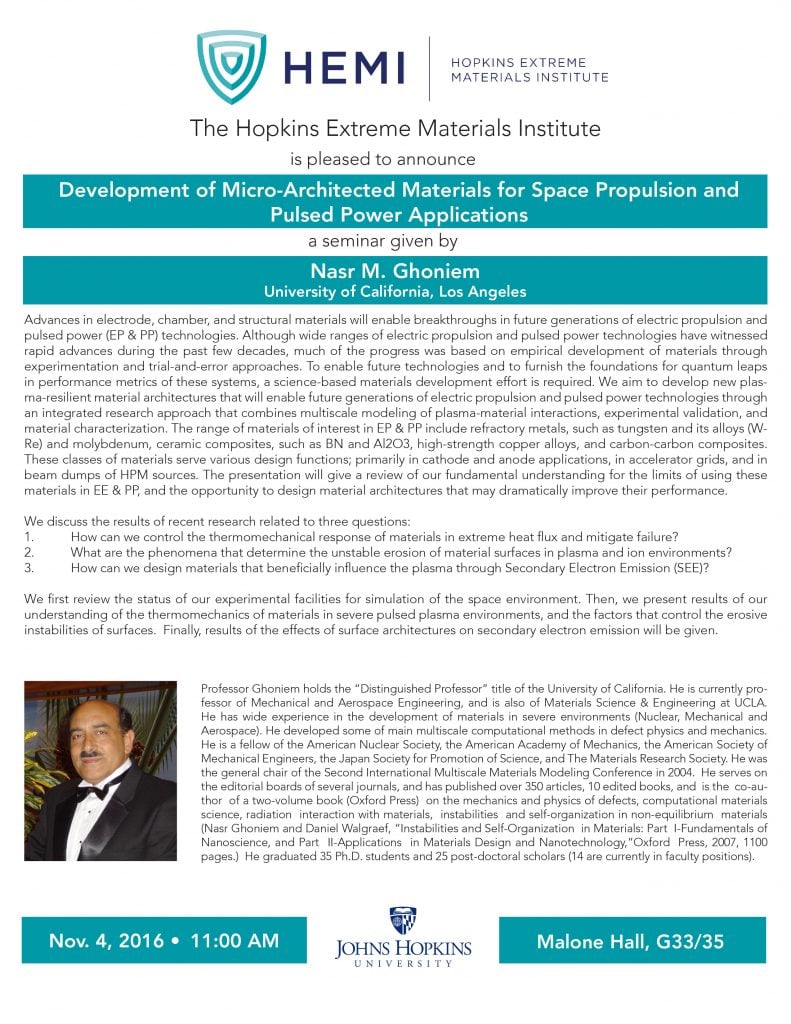November 4, 2016 @ 11:00 am - 12:00 pm
Event Navigation
Development of Micro-Architected Materials for Space Propulsion and Pulsed Power Applications
Nasr M. Ghoniem, University of California, Los Angeles
Advances in electrode, chamber, and structural materials will enable breakthroughs in future generations of electric propulsion and pulsed power (EP & PP) technologies. Although wide ranges of electric propulsion and pulsed power technologies have witnessed rapid advances during the past few decades, much of the progress was based on empirical development of materials through experimentation and trial-and-error approaches. To enable future technologies and to furnish the foundations for quantum leaps in performance metrics of these systems, a science-based materials development effort is required. We aim to develop new plasma-resilient material architectures that will enable future generations of electric propulsion and pulsed power technologies through an integrated research approach that combines multiscale modeling of plasma-material interactions, experimental validation, and material characterization. The range of materials of interest in EP & PP include refractory metals, such as tungsten and its alloys (W-Re) and molybdenum, ceramic composites, such as BN and Al2O3, high-strength copper alloys, and carbon-carbon composites. These classes of materials serve various design functions; primarily in cathode and anode applications, in accelerator grids, and in beam dumps of HPM sources. The presentation will give a review of our fundamental understanding for the limits of using these materials in EE & PP, and the opportunity to design material architectures that may dramatically improve their performance. We discuss the results of recent research related to three questions: (1) How can we control the thermomechanical response of materials in extreme heat flux and mitigate failure? (2) What are the phenomena that determine the unstable erosion of material surfaces in plasma and ion environments? and (3) How can we design materials that beneficially influence the plasma through Secondary Electron Emission (SEE)? We first review the status of our experimental facilities for simulation of the space environment. Then, we present results of our understanding of the thermomechanics of materials in severe pulsed plasma environments, and the factors that control the erosive instabilities of surfaces. Finally, results of the effects of surface architectures on secondary electron emission will be given.
Seminar will be held at 11:00 AM in Malone Hall, G33/35.





